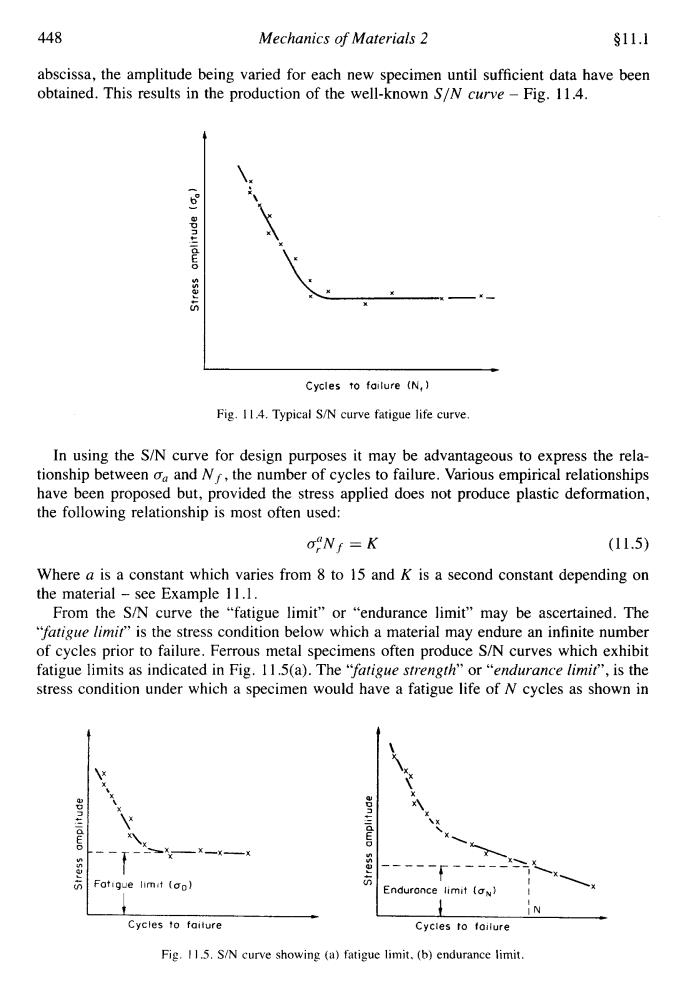正在加载图片...

448 Mechanics of Materials 2 §11.1 abscissa,the amplitude being varied for each new specimen until sufficient data have been obtained.This results in the production of the well-known S/N curve-Fig.11.4. Cycles to faiture (N, Fig.114.Typical S/N curve fatigue life curve. In using the S/N curve for design purposes it may be advantageous to express the rela- tionship between oa and N,the number of cycles to failure.Various empirical relationships have been proposed but,provided the stress applied does not produce plastic deformation, the following relationship is most often used: o Nf=K (11.5) Where a is a constant which varies from 8 to 15 and K is a second constant depending on the material-see Example 11.1. From the S/N curve the "fatigue limit"or "endurance limit"may be ascertained.The "fatigue limit"is the stress condition below which a material may endure an infinite number of cycles prior to failure.Ferrous metal specimens often produce S/N curves which exhibit fatigue limits as indicated in Fig.11.5(a).The "fatigue strength"or"endurance limit",is the stress condition under which a specimen would have a fatigue life of N cycles as shown in Fatigue limit (op) Endurance limit〔aul IN Cycles to faiture Cycles to foilure Fig.11.5.S/N curve showing (a)fatigue limit.(b)endurance limit.448 Mechanics of Materials 2 $11.1 abscissa, the amplitude being varied for each new specimen until sufficient data have been obtained. This results in the production of the well-known SIN curve - Fig. 11.4. Cycles TO failure (N,) Fig. 1 I .4. Typical S/N curve fatigue life curve In using the S/N curve for design purposes it may be advantageous to express the relationship between a, and Nf , the number of cycles to failure. Various empirical relationships have been proposed but, provided the stress applied does not produce plastic deformation, the following relationship is most often used: a;Nf = K (11.5) Where u is a constant which varies from 8 to 15 and K is a second constant depending on the material - see Example 1 1.1. From the S/N curve the “fatigue limit” or “endurance limit” may be ascertained. The “jiztigue limit” is the stress condition below which a material may endure an infinite number of cycles prior to failure. Ferrous metal specimens often produce S/N curves which exhibit fatigue limits as indicated in Fig. 11.5(a). The ‘yarigue srrength” or “endurance limit”, is the stress condition under which a specimen would have a fatigue life of N cycles as shown in I I IN - Cycles Cycles to failure to failure Fig. I 1.5. SIN curve showing (a) fatigue limit. (b) endurance limit